





uPVC doors, window frames, pipes, and plumbing are very popular, and for good reason. It is hard-wearing and long-lasting, making it perfect for outdoor applications. But what if you get bored with how your uPVC exterior looks? Painting uPVC is easier than you might think, especially when you choose a high-quality, specifically designed paint.
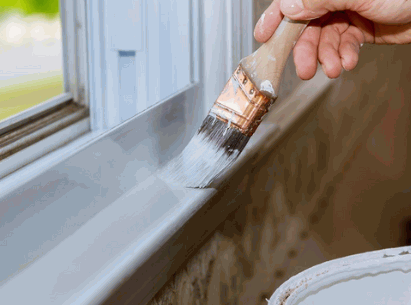
uPVC stands for unplasticised polyvinyl chloride, a more rigid form of PVC. PVC is plasticised, which means that it is malleable. uPVC, on the other hand, is tough and rigid enough for use in construction.
It is highly durable, and weather, chemical, and impact resistant, so you can expect it to last for a long time. You don't need to worry too much about maintenance. Cleaning with soap and water is usually plenty to keep it clean and looking its best.
You don't need to paint uPVC, but you can if you want to change how it looks.
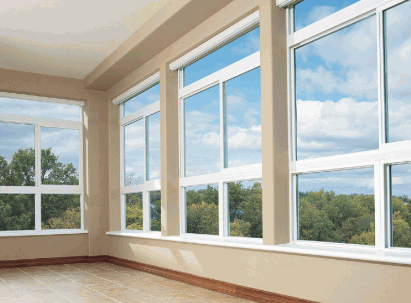
There is a common misconception that uPVC can't be painted. That the colour you have originally is what you're stuck with unless you replace the whole lot. But this isn't true. While uPVC does have more challenges than painting other types of surfaces, using the right paint and tools makes it a surprisingly simple job.
Discover: How To Spray Paint uPVC Windows
uPVC is a non-porous material, which is one of the factors that make it so perfect for exterior use. But what this also means is that paint will not easily adhere to it. If you attempt to paint uPVC with non-specialist paint, it won't stick properly, which will result in peeling, flaking, and chipping.
Because uPVC has such a smooth finish, any inconsistencies in the paint coverage will be highlighted. Using the correct paint, tools, technique, and a little bit of patience can help to overcome this issue.
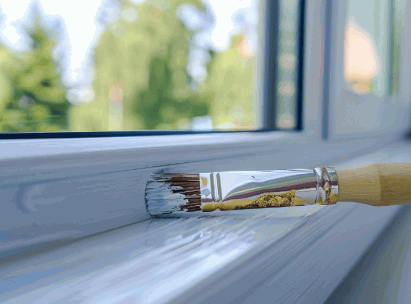
If you're looking for uPVC paints, we recommend our Pentura uPVC Paint. Whether you're painting uPVC doors, uPVC windows, or other uPVC fixtures like pipes, this paint will create the perfect finish you've been hoping for.
With its Permaflex technology, this polyurethane paint is specifically designed for use on uPVC surfaces. Let's take a look at exactly what makes this uPVC paint so effective.
Check out: What Is UPVC paint
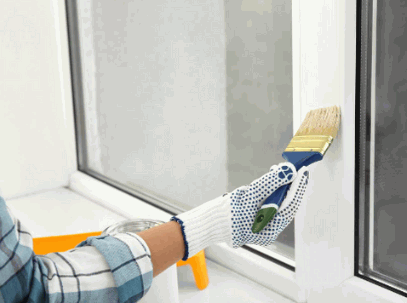
One of the biggest challenges to use when painting an uPVC door, window, or other exterior fixture is adhesion. Our self-priming uPVC paint is designed to bond directly to the smooth, non-porous uPVC surface, without the need for a separate primer.
Better adhesion means less chance of flaking, peeling, or chipping, so you're new look front door will last for years to come.
Your uPVC front door, windows, and other fixtures will be outside in all weather conditions, and your uPVC paint needs to be able to survive. Our uPVC paint is designed to withstand:
Flexibility might not be one of the properties that first comes to mind when thinking about the perfect uPVC paint, but it is important. uPVC expands and contracts as temperatures change, which is part of what helps it last so long, and anything you paint it with needs to do the same. This helps to prevent cracks and peeling of the paint's surface.
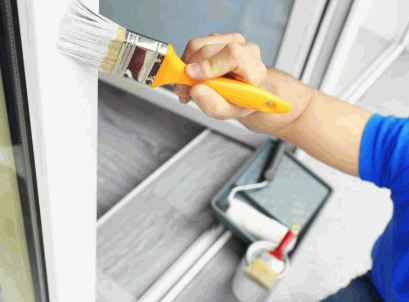
Our Pentura uPVC Paint is suitable for both paintbrushes and rollers or spray painting. But which is best to paint uPVC doors and windows?
Explore: Spray Gun VS Brush
A paintbrush will give you greater control and precision, especially for small, intricate areas. This will allow you to be better able to ensure the paint is perfect right up to the edges.
Using a paintbrush and roller can be less expensive because the equipment and tools needed are cheaper. It does cost more money to invest in a spray gun, although you can opt for our aerosol uPVC spray paint, which eliminates the need for extra equipment.
Spray painting does create overspray that is very difficult to fully control. It is highly likely that paint will end up in places where you don't intend it to, just by the nature of spraying paint into the air. Using a paintbrush and roller to directly apply the paint to the uPVC surface means much less paint is released into the air and it is more likely to go only where you want it to.
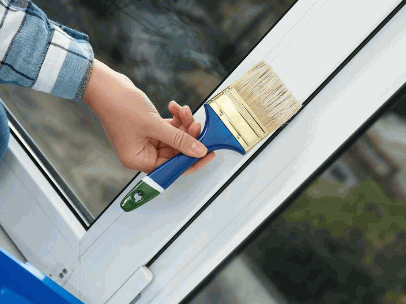
When you use a paintbrush, brush marks are basically inevitable, as is an orange peel-type texture from the roller. If you are aiming for a very smooth or gloss finish, this can be almost impossible to fully achieve with this method.
It takes a lot longer to paint uPVC doors and windows using a paintbrush and roller than it would to spray paint them. You can cover less surface in the same amount of time, and this can be a particular problem for larger areas.
Even with the best brush skills, it is hard to create fully even coverage across a large surface. Different amounts of paint on the brush, different stroke speeds, and a different amount of pressure can all create uneven coverage.
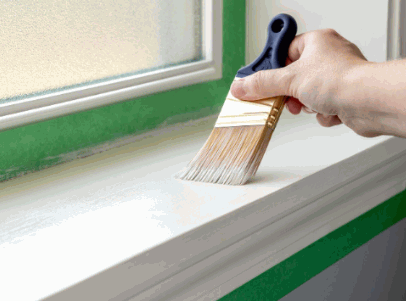
Anyone can achieve a smooth, professional-looking finish using spray paint. This is especially important for uPVC doors and windows where a glossy or satin-smooth look would be expected.
You can cover a larger area in a smaller amount of time using spray paint over a brush and roller. This makes it more efficient to apply a thinner first and second coat, making it more likely that you will achieve a smooth, even finish.
Once you've adjusted the settings in the gun, the spray paint will leave the nozzle at the same speed and with the same amount of pressure for the entire time you are painting. This makes it much easier to provide even coverage, even on a larger surface area.
It might seem unlikely, especially with the overspray, but spray painting actually uses less paint than a paintbrush and roller. Its even thinner coverage means that you will need less paint to cover the same surface, and its even distribution means that you will need fewer coats.
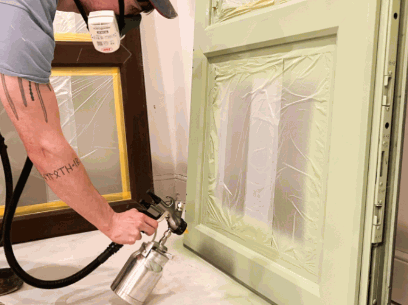
Overspray is almost certainly going to happen, so any nearby glass, wood, door handle, etc will need to be carefully covered with masking tape. In certain circumstances, it can be difficult to fully cover all of the features and areas that you don't want to get painted, and missing some can mean a time-consuming cleanup later on.
Spray painting will require extra equipment if you are using a spray gun, and this will be more expensive than basic decorating tools. However, our Pentura uPVC paint does come in aerosol cans as well, which can be used straight from the packet.
Overall, most people would recommend spray painting uPVC, rather than using a paintbrush and roller, and this is for a few reasons. Perhaps the most important is that it is the only method that will provide the smooth finish that you would expect from uPVC.
It is also a much more efficient method of covering a large area of white uPVC, like a front door. With that being said, there is still a place for some paintbrush work, especially in more intricate areas like a window frame.
If you don't have a spray gun at home and aren't sure how to get started with spray painting, we can help. We have all of the equipment you need, including a range of spray guns so that you can create that professional-looking finish you've been hoping for.
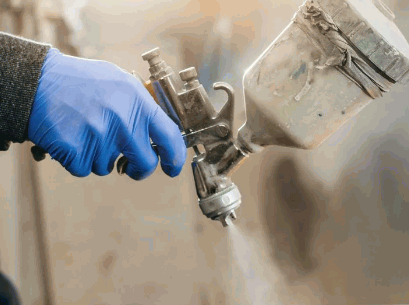
On average, you can expect to pay between £500 and £2,000 for a new uPVC door, and between £500 and £1,500 per uPVC window. This can quickly rack up to be an expensive project and if there is nothing wrong with the doors and windows themselves, this may be money you don't want to shell out.
But if you still fancy different colours or the enhanced kerb appeal of a new look for your uPVC, painting is a viable and more cost-effective alternative. Especially if you are taking the task on as a DIY project. Then you only need to consider the cost of the paint itself and any extra equipment like a spray gun.
Take a look: UPVC Door Spraying
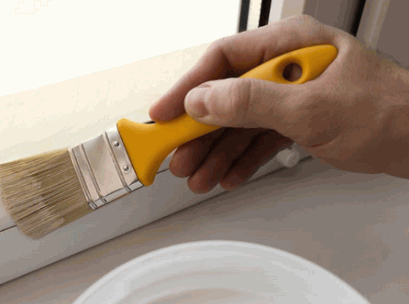
Are you ready to give your house a whole new look? Transform your uPVC doors and windows, and other exterior features, with our Pentura uPVC Paint. Durable, weather-resistant, self-priming, and highly adhesive, this paint is available in a huge range of colours. Whatever your vision, we will have the perfect paint for you.
Aren't sure what you need? Get in touch with our friendly team today. They know everything there is to know about uPVC paint and will help you choose the best paint and equipment for your project.
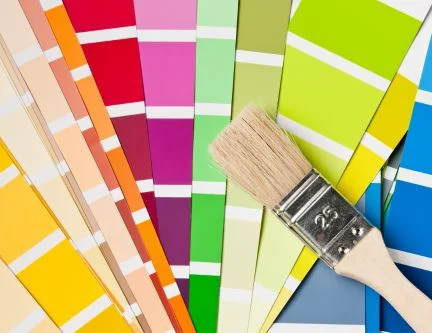
SUBSCRIBE NOW AND BE ENTERED INTO OUR COMPETITION FOR A £500 GIFT VOUCHER FOR PENTURA!